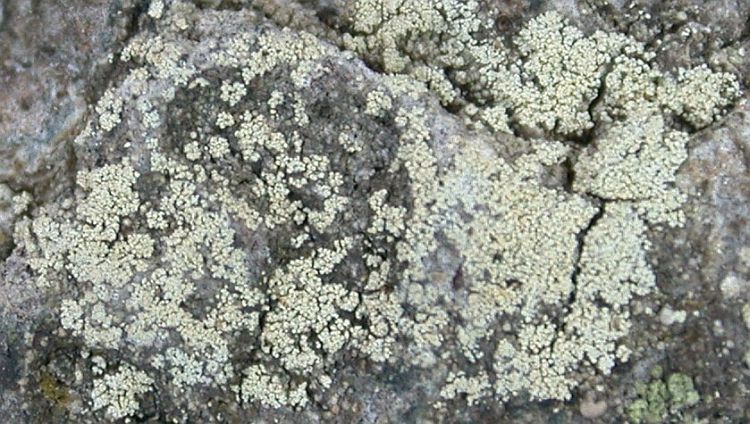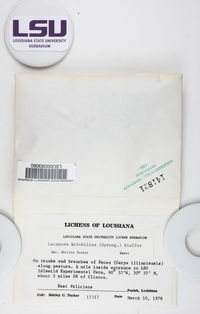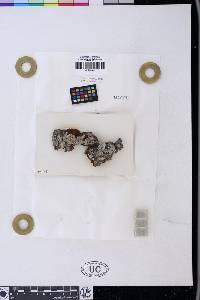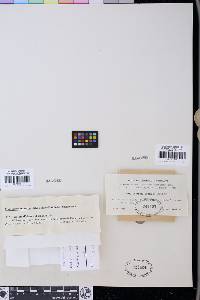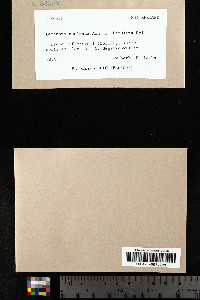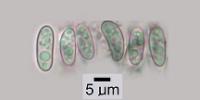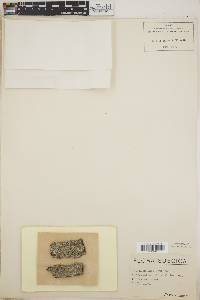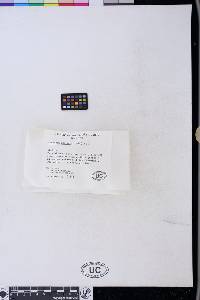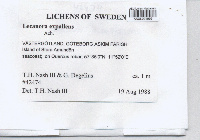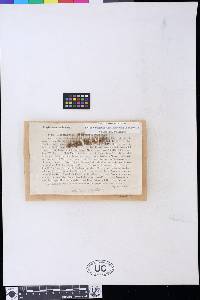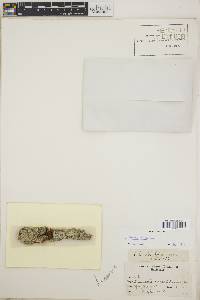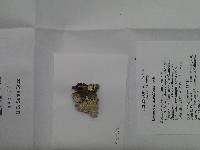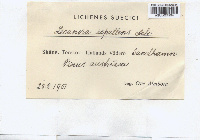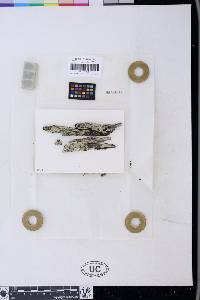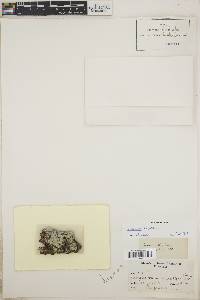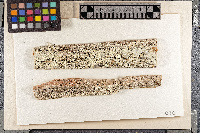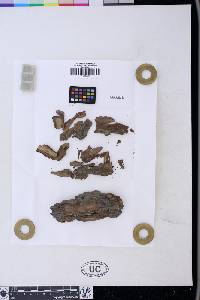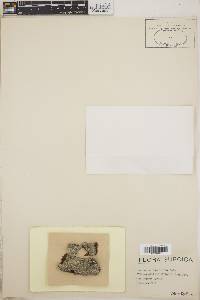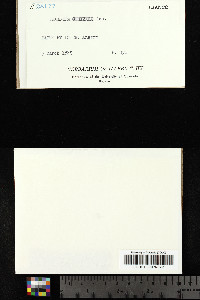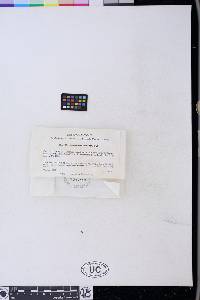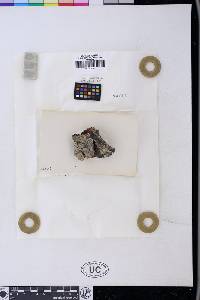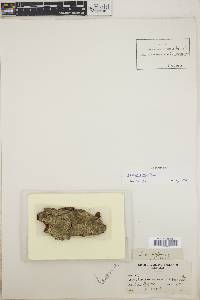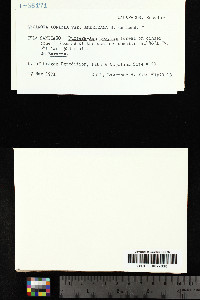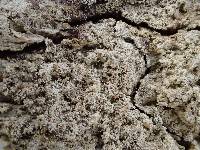
Consortium of Lichen Herbaria
- building a Global Consortium of Bryophytes and Lichens as keystones of cryptobiotic communities -
- Home
- Search
- Images
- Species Checklists
- US States: O-Z >
- US National Parks
- Central America
- South America
- US National Parks
- Southern Subpolar Region
|
|
|
|
Family: Lecanoraceae
[Lecanora conizaea (Ach.) Nyl., moreLecanora conizaea f. conizaea (Ach.) Nyl., Lecanora conizaea f. variola Arnold, Lecanora conizaea var. conizaea (Ach.) Nyl., Lecanora conizaea var. conizaeoides (Nyl. ex Cromb.) A.L. Sm., Lecanora expallens var. conizaea Ach., Lecidea expallens (Ach.) Borrer, Lepraria expallens (Ach.) Fr., Rinodina conizaea (Ach.) Nyl.] |
Nash, T.H., Ryan, B.D., Gries, C., Bungartz, F., (eds.) 2004. Lichen Flora of the Greater Sonoran Desert Region. Vol 2. Thallus: crustose, usually endosubstratal in non-sorediate parts and hence appearing totally leprose, usually thin, weakly delimited or indeterminate, at first forming small rounded patches up to a cm or more wide, later usually becoming irregular and often confluent with adjacent thalli and then sometimes covering extensive areas up to several dm wide, areolate; prothallus: often distinct, white or more rarely partly tinged blue, very rarely distinctly blue throughout giving the thallus a +blue over-all color esorediate areolae: sometimes distinct in richly fertile specimens, slightly convex, up to 0.2 mm wide, becoming +contiguous, ecorticate surface: mostly green or pale yellow, rarely deep yellow or green with a blue or gray tinge, sorediate soredia: farinose, diffuse, 20-50 µm in diam., often in aggregations, in variably formed soralia that usually protrude through the uppermost cell layer of the substrate or rarely burst from corticate areolae and that soon become confluent forming a leprose crust or more rarely are +persistently discrete and +orbicular up to 0.5 mm wide medulla: rarely evident, white Apothecia: lecanorine, usually sparse or absent, sessile, up to 1.5 mm wide disc: dull yellow, flesh-colored, pale pink or brown, flat to slightly convex, rarely distinctly convex, occasionally pruinose, up to 0.8 mm in diam. margin: not or only weakly prominent, often persistent, concolorous with thallus or lighter, soon becoming sorediate and/or excluded, without a parathecial ring amphithecium: present, with +randomly scattered algal cells, composed of irregularly entangled hyphae, laterally up to 85 µm wide, ecorticate parathecium: hyaline, 20-35 µm wide laterally epihymenium: pale yellow, with numerous small crystals soluble in K, 8-15 µm thick hymenium: hyaline, 35-55(-60) µm tall; paraphyses: 1.5-2.5 µm thick, simple to sparsely branched and anastomosing; with only slightly thickened apices; subhymenium: hyaline, 35-50 µm thick; hypothecium: hyaline to pale straw colored, 90-100 µm thick asci: cylindrical-clavate, 11-15 x c. 35 µm (often immature), 8spored ascospores: hyaline, simple, narrowly to broadly ellipsoid, (7.5-)9-13(-16) x (3-)4-6(-7) µm Pycnidia: not seen Spot tests: K+ pale yellow, C+ deep yellow to orange, KC- or intensified, P-; UV+ dull violet (short wave), dull brownish (long wave) Secondary metabolites: usnic acid, zeorin, thiophanic acid (major), unidentified xanthone(s), expallens unknown (Tønsberg 1992). Substrate and ecology: on bark and wood of shrubs and over plant remnants World distribution: Africa, Asia, Europe, New Zealand and North America Sonoran distribution: southern California and Baja California Sur at sea-level to 400 m. Notes: A morphologically similar, but chemically different form (from California, Santa Barbara Co., Santa Cruz Island, on bark of Pinus muricata, leg. Printzen) contains usnic acid, zeorin, and a major, unidentified substance at RF-classes A5, B (4-)5, C (5-)6 (bright yellow to yellow-green in LW UV-light before charring) may be related to L. expallens; however, it has only been found sterile and its affinity is at present uncertain. When sterile, L. expallens is easily confused with Pyrrhospora quernea, but that species is distinct, e.g., in having a thallus with a fawn tint and by not producing usnic acid and zeorin. This species was initially recognized by T. Tønsberg, who provided the initial description. |
|
|
|
Powered by Symbiota

